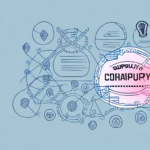Introduction
In today's increasingly competitive business environment, large companies are constantly seeking ways to reduce expenses and maximize profits. Cutting costs, however, is not an easy task, especially for organizations with complex structures and diverse operational expenses. Developing a sustainable cost reduction plan that addresses all expenditure areas is critical. In this article, we will explore effective money-saving ideas for large companies and provide practical strategies to help cut costs and increase profitability.
Identifying Cost-Cutting Opportunities
The first step in reducing expenses for large companies is identifying areas ripe for cost-cutting. This requires a thorough analysis of the company's financial statements, operational processes, and vendor contracts. Common areas offering cost-saving opportunities include marketing, human resources, IT, procurement, and real estate. Leveraging data analytics can help pinpoint inefficiencies in operational workflows, as highlighted in the Deloitte Operations Analytics report.
Analyzing Financial Statements
Regularly reviewing financial statements helps identify unnecessary expenses and areas where spending can be optimized.
Evaluating Operational Processes
Assessing and streamlining operational workflows can uncover inefficiencies and opportunities for automation.
Implementing Expense and Asset Management Strategies
Effective expense management is crucial for cost-cutting in large companies. Utilizing expense tracking and reporting tools can provide better visibility into spending patterns, thereby identifying waste and inefficiencies. Implementing Enterprise Resource Planning (ERP) software automates procurement, inventory, and invoicing processes, reducing transactional costs and improving cash flow. According to a Gartner report, companies using ERP systems see a significant increase in operational efficiency.
Automation in Processes
Automation can significantly reduce the need for manual labor and increase efficiency. Automating tasks such as invoice processing helps reduce errors and save time, leading to substantial cost savings.
Vendor Negotiations
Negotiating better deals with vendors by leveraging the company's purchasing power can result in lower procurement costs. Exploring alternative suppliers also ensures competitive pricing.
Streamlining Business Processes
Streamlining business processes involves simplifying workflows, eliminating redundancies, and standardizing procedures. Adopting methodologies like lean manufacturing or agile development can enhance productivity and efficiency. For example, McKinsey reports that companies implementing lean management practices can reduce operational costs by up to 25%.
Consolidating Departments
Consolidating similar departments, such as accounting or HR, can reduce overhead costs and improve coordination.
Adopting Lean Methodologies
Lean methodologies focus on minimizing waste and optimizing processes, leading to enhanced efficiency and cost savings.
Vendor Negotiations and Outsourcing
Effective vendor management can lead to significant cost savings. By negotiating lower prices, longer payment terms, or volume discounts, companies can lower procurement costs. Conducting thorough market research and understanding competitor pricing can strengthen negotiation positions. According to a Harvard Business Review article, companies that invest in strong supplier relationships achieve better pricing and service levels.
Market Research
Understanding the market and competitor offerings helps in negotiating favorable terms with suppliers.
Outsourcing Non-Core Functions
Outsourcing non-core or repetitive tasks to external service providers can leverage specialized expertise and reduce labor costs.
Leveraging Technology and Automation
Technology plays a pivotal role in reducing costs and improving profitability. Implementing automation, artificial intelligence (AI), and blockchain can streamline processes, reduce errors, and enhance decision-making. For instance, chatbots can automate customer service, reducing the need for extensive call centers. According to a McKinsey AI report, AI can potentially deliver additional global economic activity of around $13 trillion by 2030.
AI and Machine Learning
Integrating AI into business operations can lead to smarter, data-driven decision-making and greater efficiency.
Cloud Computing
Cloud technologies can reduce infrastructure costs and improve scalability for large companies.
Engaging Employees and Ensuring Risk Management
Cost reduction initiatives require the involvement and commitment of all employees. Fostering a cost-conscious culture encourages employees to identify and propose cost-saving opportunities. Providing training on cost management best practices and incentivizing employees can enhance participation. A Gallup study found that highly engaged teams show a 21% increase in profitability.
Training and Education
Educating employees on effective cost management strategies empowers them to contribute to cost-cutting efforts.
Incentivizing Cost-Saving Ideas
Offering incentives for employees who propose successful cost-saving initiatives can boost engagement and innovation.
Risk Management
Integrating risk management into cost-cutting strategies ensures that reductions do not negatively impact operations or reputation. Identifying and mitigating risks such as supply chain disruptions, cybersecurity threats, or regulatory changes is essential. According to a PwC risk management report, proactive risk management can prevent significant financial losses and ensure sustainable growth.
Conclusion
Cost reduction and profitability are critical drivers of success for large companies. By adopting effective and sustainable cost-saving strategies, organizations can optimize operational efficiency, strengthen competitiveness, and increase value to shareholders, employees, and customers. However, successful cost reduction requires a mindset of continuous improvement, innovation, and risk management. By fostering a culture of cost-consciousness and accountability, and investing in employee development and customer-centricity, companies can achieve long-term success and growth.




















